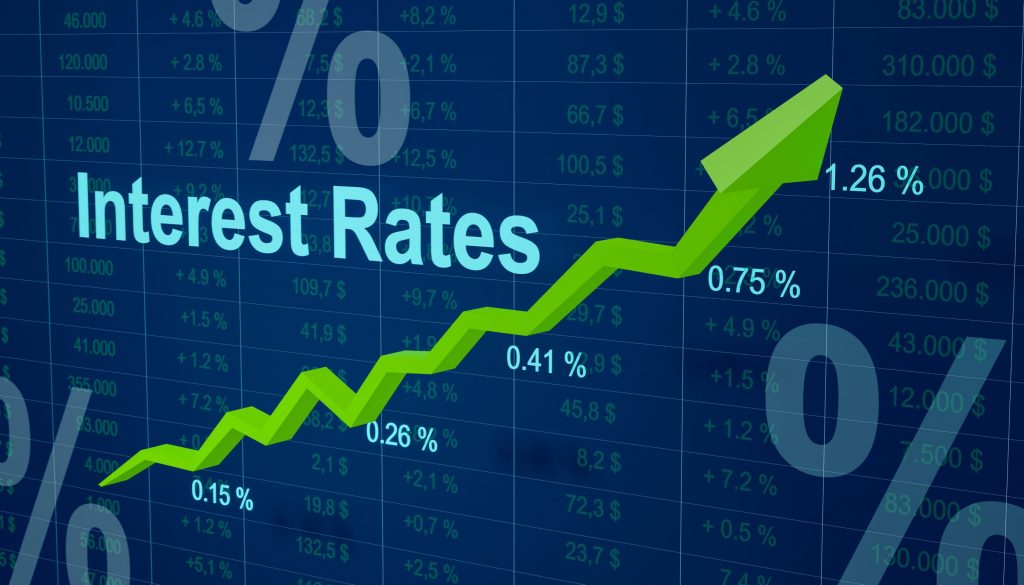
interest rates
How the Federal Reserve’s rate hikes affect your finances
WASHINGTON (AP) — Higher mortgage rates have sent home sales tumbling. Credit card rates have grown more burdensome, and so have auto loans. Savers are finally receiving yields that are actually visible, while crypto assets are reeling.
The Federal Reserve’s move Wednesday to further tighten credit raised its benchmark interest rate by a sizable 0.75 percentage point for a second straight time. The Fed’s latest hike, its fourth since March, will further magnify borrowing costs for homes, cars and credit cards, though many borrowers may not feel the impact immediately.
The central bank is aggressively raising borrowing costs to try to slow spending, cool the economy and defeat the worst outbreak of inflation in two generations.
The Fed’s actions have ended, for now, an era of ultra-low rates that arose from the 2008-2009 Great Recession to help rescue the economy — and then re-emerged during the brutal pandemic recession, when the Fed slashed its benchmark rate back to near zero.
Chair Jerome Powell hopes that by making borrowing more expensive, the Fed will succeed in slowing demand for homes, cars and other goods and services. Reduced spending could then help bring inflation, most recently measured at a four-decade high of 9.1%, back to the Fed’s 2% target.
Yet the risks are high. A series of higher rates could tip the U.S. economy into recession. That would mean higher unemployment, rising layoffs and further downward pressure on stock prices.
How will it all affect your finances? Here are some of the most common questions being asked about the impact of the rate hike:
I’M CONSIDERING BUYING A HOUSE. WHAT’S HAPPENING WITH MORTGAGE RATES?
Higher interest rates have torpedoed the housing market. Rates on home loans have nearly doubled from a year ago to 5.5%, though they’ve leveled off in recent weeks even as the Fed has signaled that more credit tightening is likely.
That’s because mortgage rates don’t necessarily move in tandem with the Fed’s increases. Sometimes, they even move in the opposite direction. Long-term mortgages tend to track the yield on the 10-year Treasury note, which, in turn, is influenced by a variety of factors. These factors include investors’ expectations for future inflation and global demand for U.S. Treasurys.
Investors expect a recession to hit the U.S. economy later this year or early next year. This would force the Fed to eventually cut its benchmark rate in response. The expectation that the Fed will have to reverse some of its hikes next year has helped reduce the 10-year yield, from 3.5% in mid-June to roughly 2.8%.
WILL IT BE EASIER TO FIND A HOUSE?
Sales of existing homes have dropped for five straight months, while new home sales plunged in June. If you’re financially able to go ahead with a home purchase, you’re likely to have more choices than you did a few months ago.
In many cities, the options are few. But the number of available houses nationwide has started to rise after falling to rock-bottom levels at the end of last year. There are now 1.26 million homes for sale, according to the National Association of Realtors, up 2.4% from a year ago.
I NEED A NEW CAR. SHOULD I BUY ONE NOW?
The Fed’s rate hikes typically make auto loans more expensive. But other factors also affect these rates, including competition among car makers, which can sometimes lower borrowing costs.
Wednesday’s rate hike won’t likely affect new-vehicle sales much because those buyers are mainly affluent customers who won’t be squeezed by a relatively small uptick in monthly payments, said Jonathan Smoke, chief economist for Cox Automotive. By contrast, he said, used-car buyers with weaker credit who pay higher loan rates could be hurt.
“Many used-vehicle buyers are already acutely feeling the impacts of higher prices for energy, food and rent,” Smoke said.
Used vehicle prices have begun to fall, he noted, and vehicle availability is beginning to return to normal levels.
The full amount of a Fed rate hike doesn’t always pass through to auto loans, according to Bankrate.com. New 60-month loans for new vehicles have risen about a percentage point this year to an average of 4.86%, Bankrate.com says, while a 48-month used-vehicle rate rose just under 1 point to 5.38%.
WHAT WILL HAPPEN TO MY CREDIT CARD?
For users of credit cards, home equity lines of credit and other variable-interest debt, rates would rise by roughly the same amount as the Fed hike, usually within one or two billing cycles. That’s because those rates are based in part on banks’ prime rate, which moves in tandem with the Fed.
Those who don’t qualify for low-rate credit cards might be stuck paying higher interest on their balances. The rates on their cards would rise as the prime rate does.
The Fed’s rate increases have already sent credit card borrowing rates above 20% for the first time in at least four years, according to LendingTree, which has tracked the data since 2018.
HOW WILL THIS AFFECT MY SAVINGS?
You can now earn more on bonds, CDs, and other fixed income investments. And it depends on where your savings, if you have any, are parked.
Savings, certificates of deposit and money market accounts don’t typically track the Fed’s changes. Instead, banks tend to capitalize on a higher-rate environment to try to boost their profits. They do so by imposing higher rates on borrowers, without necessarily offering any juicer rates to savers.
But online banks and others with high-yield savings accounts are often an exception. These accounts are known for aggressively competing for depositors. The only catch is that they typically require significant deposits.







